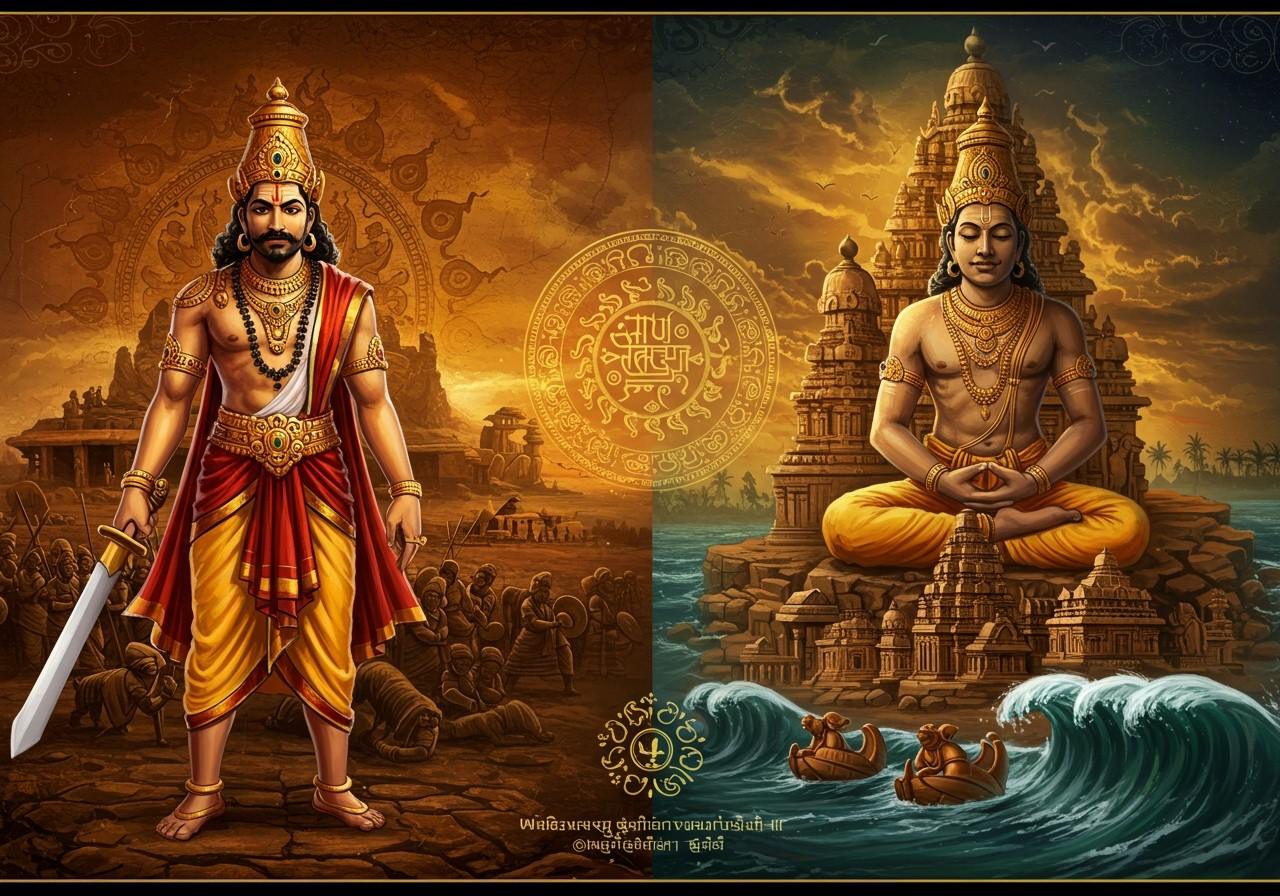
The Pallava dynasty, a prominent power in South India from the 3rd to the 9th century AD, left an enduring legacy through its contributions to art, architecture, and culture. Two of its most significant rulers, Narasimhavarman I (630-668 CE) and Narasimhavarman II (695-728 CE), played pivotal roles in shaping this legacy. This analysis delves into their reigns, comparing their achievements and exploring their distinct contributions to the Pallava dynasty.
Background of the Pallava Dynasty
Emerging from the region now known as Tamil Nadu, the Pallavas fostered a rich cultural environment. Their patronage of art, architecture, and literature significantly influenced the development of Dravidian style. The dynasty’s interactions with neighboring kingdoms and overseas entities further enriched South India’s cultural and economic landscape.
Narasimhavarman I (Mahamalla)
Narasimhavarman I, also known as Mahamalla, reigned from 630 CE to 668 CE. His rule was characterized by military successes, particularly against the Chalukyas, and remarkable architectural innovations. His victory against Pulakeshin II is a testament to his military prowess. The magnificent rock-cut temples at Mahabalipuram, a UNESCO World Heritage site, stand as a testament to his architectural vision. These intricate carvings, including the famed Pancha Rathas, showcase the early stages of Dravidian artistry.
Narasimhavarman II (Rajasimha)
Narasimhavarman II, known as Rajasimha, ruled from 695 CE to 728 CE. His reign saw a shift towards consolidation and architectural grandeur. While known for his patronage of the arts, his primary focus was on solidifying the kingdom and fostering internal stability. This period witnessed the construction of awe-inspiring structural temples, including the iconic Kailasanathar Temple in Kanchipuram and the Shore Temple complex at Mahabalipuram, marking a high point in Pallava architecture.
Comparative Analysis
Military Achievements
-
Mahamalla (Narasimhavarman I): Known for his decisive victory against the Chalukya king Pulakeshin II, he expanded the Pallava territories and solidified their military dominance in the region. His focus on military strategy and expansion significantly strengthened the Pallava kingdom.
-
Rajasimha (Narasimhavarman II): His reign was marked by relative peace and a focus on internal stability. This allowed for a flourishing of artistic and architectural endeavors, contributing to the cultural richness of the Pallava dynasty. He concentrated on consolidating the kingdom and promoting internal harmony.
Architectural Contributions
-
Mahamalla (Narasimhavarman I): Championed the rock-cut temple style, as seen in the Pancha Rathas and other monuments at Mahabalipuram. These structures represent a unique blend of artistry and engineering, demonstrating an early mastery of Dravidian architectural principles.
-
Rajasimha (Narasimhavarman II): Ushered in the era of grand structural temples, exemplified by the Kailasanathar Temple in Kanchipuram and the Shore Temple. These intricate and elaborately sculpted temples showcase a mature phase of Dravidian architecture.
Poojn.in: Connecting You to India’s Rich Heritage
At Poojn.in, we offer a wide selection of authentic puja items that connect you with India’s rich cultural heritage, including that of the Pallava period. Enhance your understanding of this era with our curated collection:
- Lord Shiva Marble Dust Murti: Honor Lord Shiva, a central deity during the Pallava period, with this beautifully crafted murti.
- Adizay Stone Shiva Lingam and Nandi Set: Connect with the spiritual traditions of the Pallavas, known for their reverence of Shiva.
- Mangalam Camphor: Enhance your puja rituals with high-quality camphor, similar to that used in ancient Pallava temples.
Explore our full collection at Poojn.in. We offer pan-India delivery and secure packaging to ensure the safe arrival of your sacred items.
Conclusion
Narasimhavarman I and Narasimhavarman II were pivotal figures in the Pallava dynasty. Mahamalla’s military prowess and architectural innovations laid the groundwork for future Pallava rulers. Rajasimha’s focus on internal stability and his patronage of grand structural temples solidified the dynasty’s cultural legacy. Their combined contributions significantly shaped South Indian history and left an enduring mark on India’s rich tapestry of art, architecture, and culture.
To further explore the architectural marvels of the Pallava dynasty, consider reading our blogs on Dravidian architecture: Dravidian and Nagara Architecture: A Comparison of Styles and Dravidian Temples: A Guide to Their Key Architectural Features.
For a deeper understanding of the Baijnath Temple, which shares architectural influences with the Pallava style, visit our blog posts: Baijnath Temple versus Baijnath Dham: A Comparison of Sacred Sites and Baijnath Temple: Ravana’s Lost Legacy – A Detailed Exploration.


